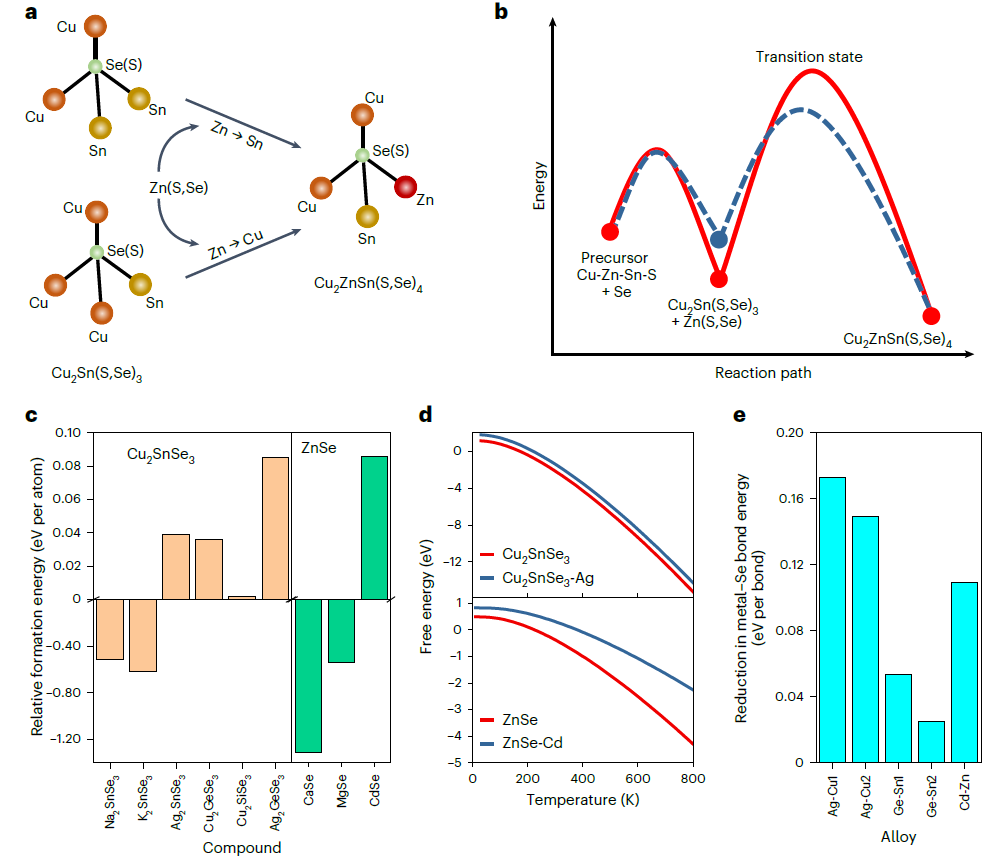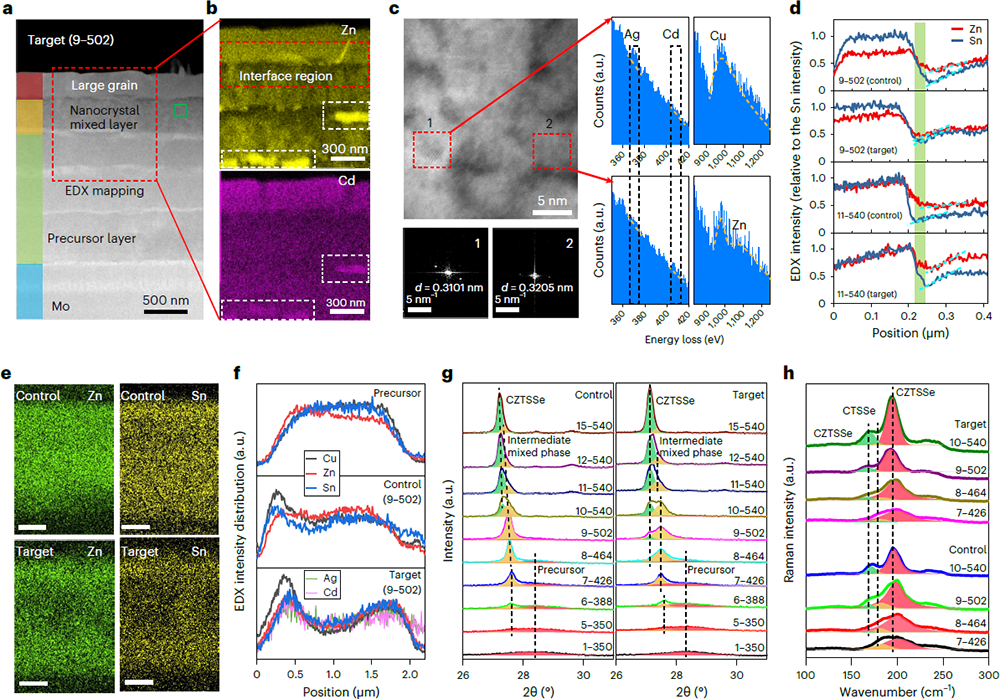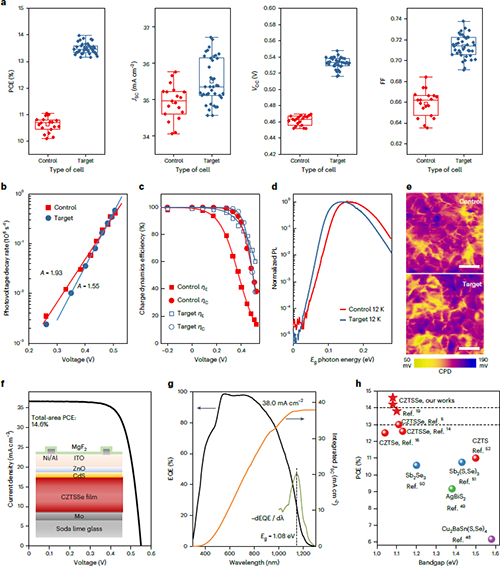Scientists suppressed the defect formation in Kesterite solar cells
Date:03-06-2024 Print
The emerging multinary chalcogenide, Cu2ZnSn(S, Se)4 (CZTSSe), is being developed as a promising candidate to promote the large-scale and low-cost application of thin-film photovoltaics by taking advantage of its high constituent element abundance, non-toxicity and excellent industrial compatibility. However, multinary element components in CZTSSe have also led to complex atomic self-doping and intrinsic defects, resulting in severe non-radiative charge recombination and significant photoelectric conversion efficiency (PCE) loss in solar cells.
Regulating defects from the thermodynamics perspective to achieve higher PCE in CZTSSe solar cells remains highly challenging, especially because the microscopic charge loss pathway in the cell, and the specific defect responsible for the efficiency loss has not been definitively identified in experiments. Moreover, the widely used thermodynamic equilibrium mechanism may not have fully reflected the defect formation in CZTSSe because its crystallization is primarily governed by kinetics-related solid-state heterogeneous reactions. Kinetic processes are typically more complex than that predicted by end-state equilibrium theories, which renders the widely explored thermodynamic regulation route less effective in suppressing defects further in the cell.
Aiming at these issues, the research group lead by Prof. Qingbo Meng in Institute of Physics, Chinese Academy of Sciences (IOPCAS) have continued to focus on more precisely identifying the defect, more comprehensively understanding the defect formation mechanism and more effectively regulating their formation processes in CZTSSe materials. Recently, A/Prof. Jiangjian Shi, Prof. Qingbo Meng and their colleagues from IOPCAS and Peking U. have revealed through a data-driven correlation analysis that the dominant deep defect in CZTSSe exhibits a donor character and further propose that incomplete cation exchange in the multi-step crystallization reactions of CZTSSe is the kinetic mechanism responsible for the defect formation. To facilitate the cation exchange, they introduced a multi-elemental alloying approach to weaken the metal–chalcogen bond strength and the stability of intermediate phases. Their strategy led to a significant reduction in charge losses within the CZTSSe absorber and to a total-area cell efficiency of 14.6% (certified at 14.2%), presenting a significant advancement for kesterite solar cells.
This study entitled "Multinary alloying for facilitated cation exchange and suppressed defect formation in kesterite solar cells with above 14% certified efficiency" was published on Nature Energy.
The study was supported by the National Science Foundation of China and the Youth Innovation Promotion Association of the Chinese Academy of Sciences.

Fig. 1 Defect-type analysis of CZTSSe.

Fig. 2 Kinetic mechanism and regulation of SnZn defect formation.

Fig. 3 Influence of elemental alloying on the solid-phase reaction in CZTSSe films.

Fig. 4 Solar cell characterization.
Contact:
Institute of Physics
MENG Qingbo
Email:qbmeng@iphy.ac.cn
Key words:
Kesterite solar cell; Defect; Multinary alloying
Abstract:
Kesterite Cu2ZnSn(S, Se)4 (CZTSSe) solar cells are highly promising low-cost thin-film photovoltaics. However, the efficiency of these solar cells is challenged by severe charge losses and complex defects. Here we reveal through a data-driven correlation analysis that the dominant deep defect in CZTSSe exhibits a donor character. We further propose that incomplete cation exchange in the multi-step crystallization reactions of CZTSSe is the kinetic mechanism responsible for the defect formation. To facilitate the cation exchange, we introduce a multi-elemental alloying approach aimed at weakening the metal–chalcogen bond strength and the stability of intermediate phases. This strategy leads to a significant reduction in charge losses within the CZTSSe absorber and to a total-area cell efficiency of 14.6% (certified at 14.2%). Overall, these results not only present a significant advancement for kesterite solar cells but could also help identify and regulate defects in photovoltaic materials.

